Photographer based in Brooklyn, NY
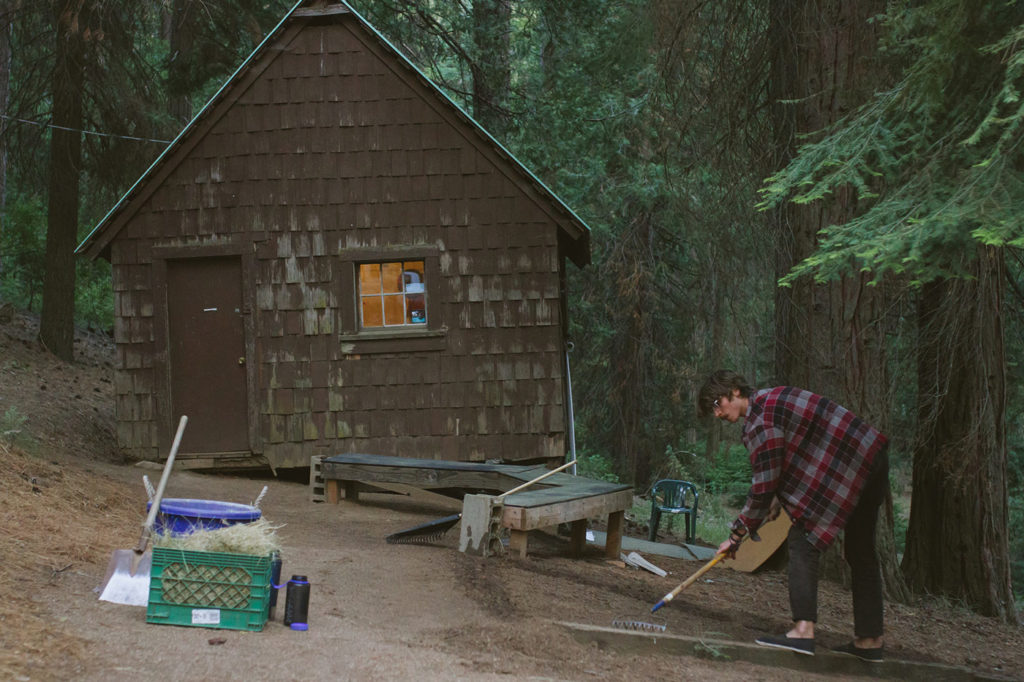
Sam Margevicius, Portrait of the photographer. Photo by Garrett Remy
Tell us about yourself, what's your background?
I was born and raised in California’s Silicon Valley, then I lived in Oregon for a few years, and now I’ve been based in New York for about a decade. My parents both grew up on the East Coast and moved West, and I think they raised me with this myth of a West that was liberated of unnecessary formalities, free from the pomp and circumstance of polite society. This became a kind of problem for me though because I was raised there in the West– that’s all I knew, and it’s easy to loosen a tie but it’s hard to put one on.
For as long as I can remember I have wanted to be a person who made stuff, played games, and contemplated the meaning of it all. Photography always seemed to show up while I was doing these other things, so at a certain point I just turned around and started paying attention to photography, like, “How did you even get in here, photography?!”
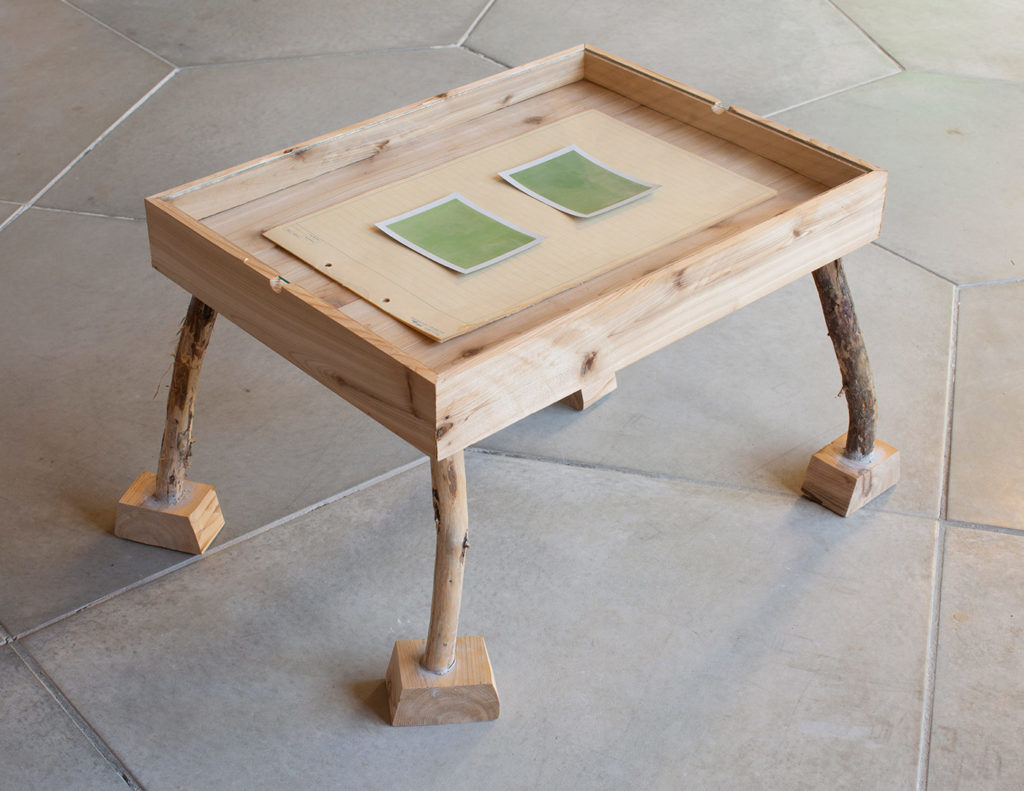
Frame With Legs, 2022, cedar wood, glass, paper, 2 dye-diffusion transfer prints, 22x18x18"

Darkroom Drawing - drawing of enlarger and mural wall, 2021, risograph, 10x16", artist book published by Small Editions NYC
"Drawing is a powerful metaphor for the way I work because it’s a medium that carries a lot of noise and leaves lots of evidence of itself."
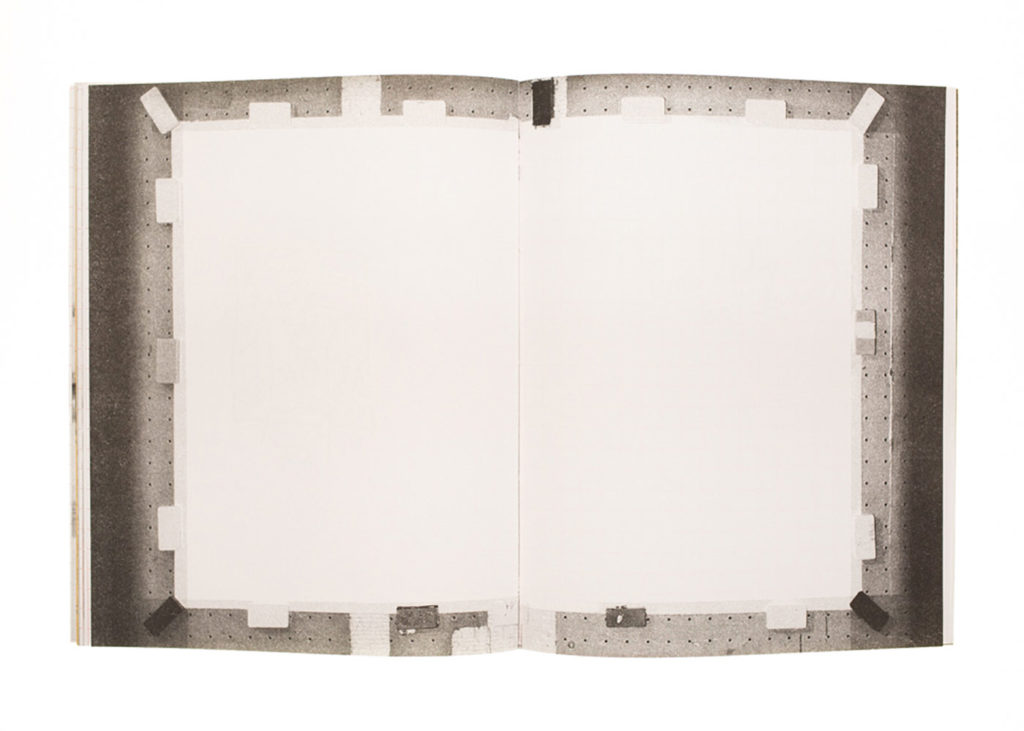
Darkroom Drawing - photograph of paper on mural wall, 2021, risograph, 10x16", artist book published by Small Editions NYC
What are you currently working on and where did the inspiration for it come from?
I’m working on a new exhibition of photographs and photo-based sculptures. On the one hand there are these visceral photographic prints that are being treated as raw materials; they are punctured, tethered, tilted, leaned, balanced…and they are really honest about being relatively flat pieces of paper mounted on thicker substrates and presented in space. Then on the other hand there are these photographic prints that are working really hard to produce the illusion that they aren’t photographs at all but the actual things they depict. I’m interested in this analogy of the finger pointing at the moon; the moon is great because it’s really really the real thing, but I also appreciate the generosity of the finger, which is the language that gets us there, and is absolutely priceless even if its imperfect or the signal is rather noisy. The working title is “Thinking Gets Me In Trouble,” but I’m hesitant about it because I don’t want to be that nagging voice– tapping people on the shoulder while they’re looking at the work and saying “Hey, this is the title, just so you know, this is what it’s called and this is what it’s about!”

Darkroom Drawing - layers describing dodge & burn sequence, 2021, risograph, 10x16", artist book published by Small Editions NYC

Light and Time on Film, 2019-2022, silver gelatin print, 20x16"
Innovation does not only happen in the field of technology — it occurs everyday in a creative practice. What do you do for inspiration?
I try to balance my production with my consumption. I go to galleries and museums or watch movies and read poetry, but that can all quickly become a form of procrastination. Similarly I will make pictures, print, or write, but soon enough I’m running in circles making things I won’t care about tomorrow. It’s really important for me to bounce between the two, so that my producing actually directs what I consume, and my consumption steers the direction of what I produce. It’s symbiotic inspiration.
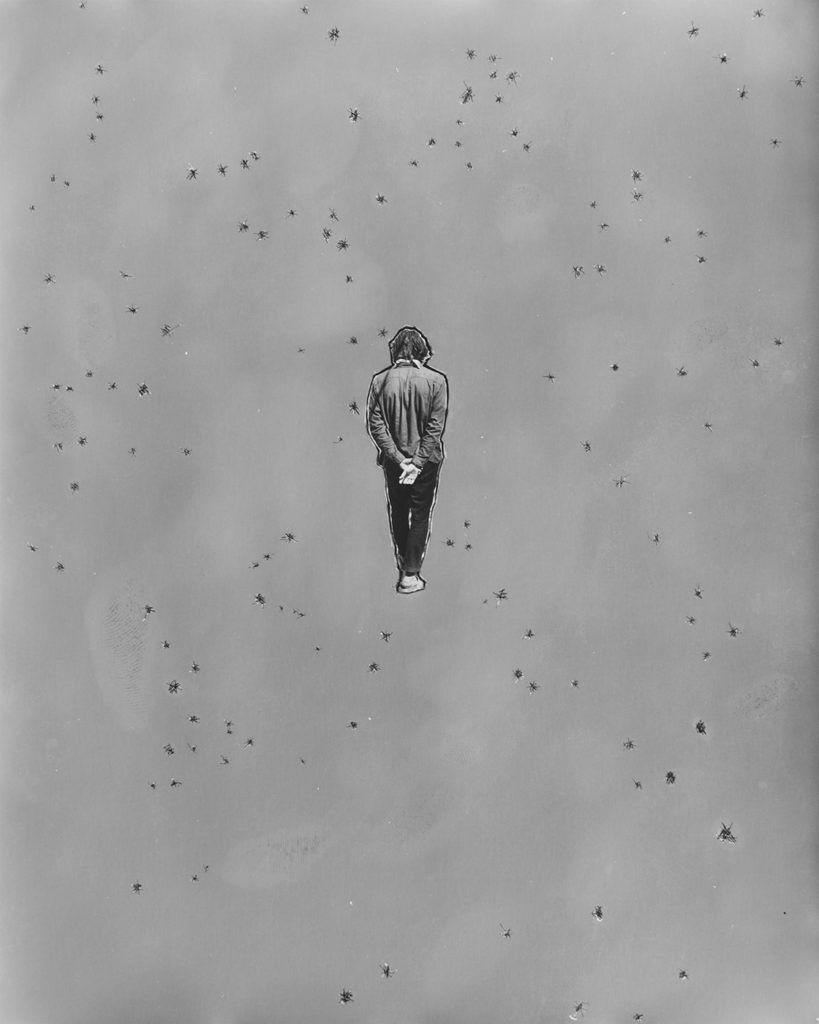
Thought Voyager, 2022, silver gelatin print, 20x16"
Describe your practice and process. Where do ideas start for you? In the studio or being in the world?
My work tends to start with a camera observing things in the world. The images go through a distillation process that is organic and intuitive, making their way onto paper and into a relationship with other photographs.
Now that I’ve started working in a woodshop making frames, the relationship isn’t just to other photographs but also to materials and methods of display. This is really flipping things on their head because now I’m inclined to make a frame, and use it like a trap that sits waiting for just the right photograph to fall into it.
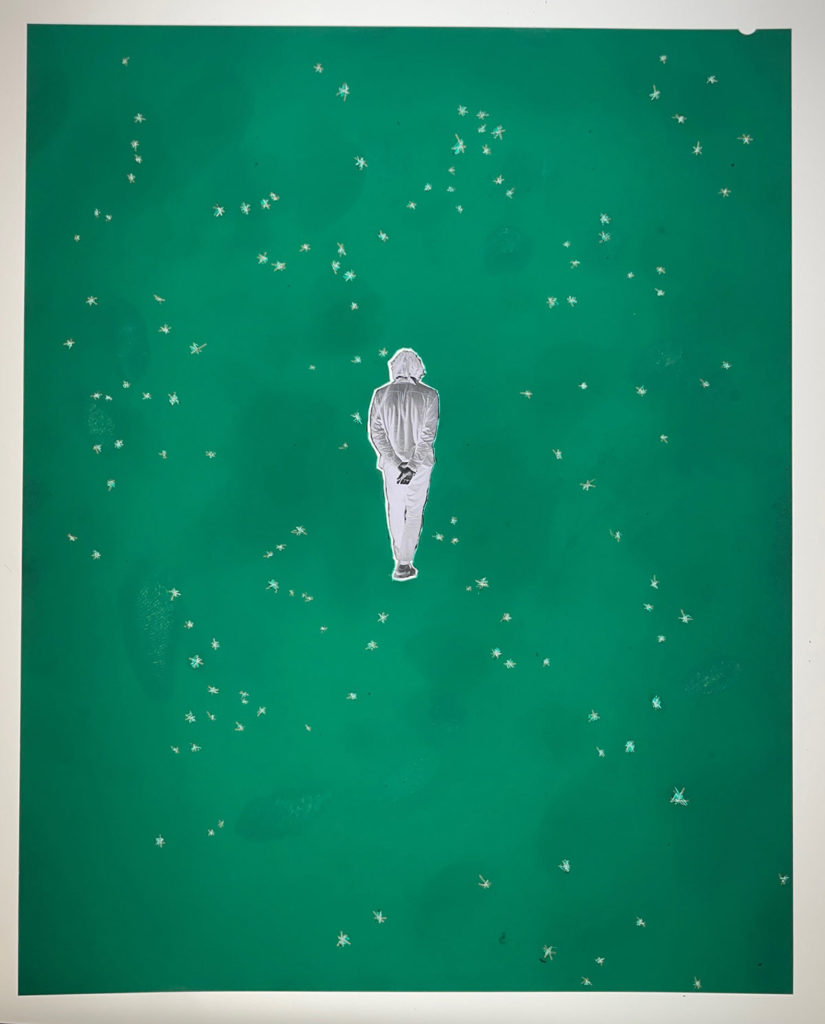
I've collaging on the film plane, so this is the negative collage that printed "Thought Voyager."

More film collaging. Here I cut out a still-life form from one sheet of film then traced the form onto another sheet of film to cut out, this way I can place the original still-life form in a new background.
How do you make your work, does it start with a sketch?
I wouldn’t say I sketch to plan a photograph because I use the camera as its own kind of sketchbook that hopes to fix ephemeral appearances. But I absolutely sketch while I’m in the process of making a print, as well as while I’m mapping out ideas about an exhibition or a book. Drawing is a powerful metaphor for the way I work because it’s a medium that carries a lot of noise and leaves lots of evidence of itself. If the stylus is a pencil, a pen, or a brush it expresses a different kind of line and is identifiable as such. A brush cannot express the same way a pencil can and so what can be expressed is both created-by and limited-to that choice of stylus.
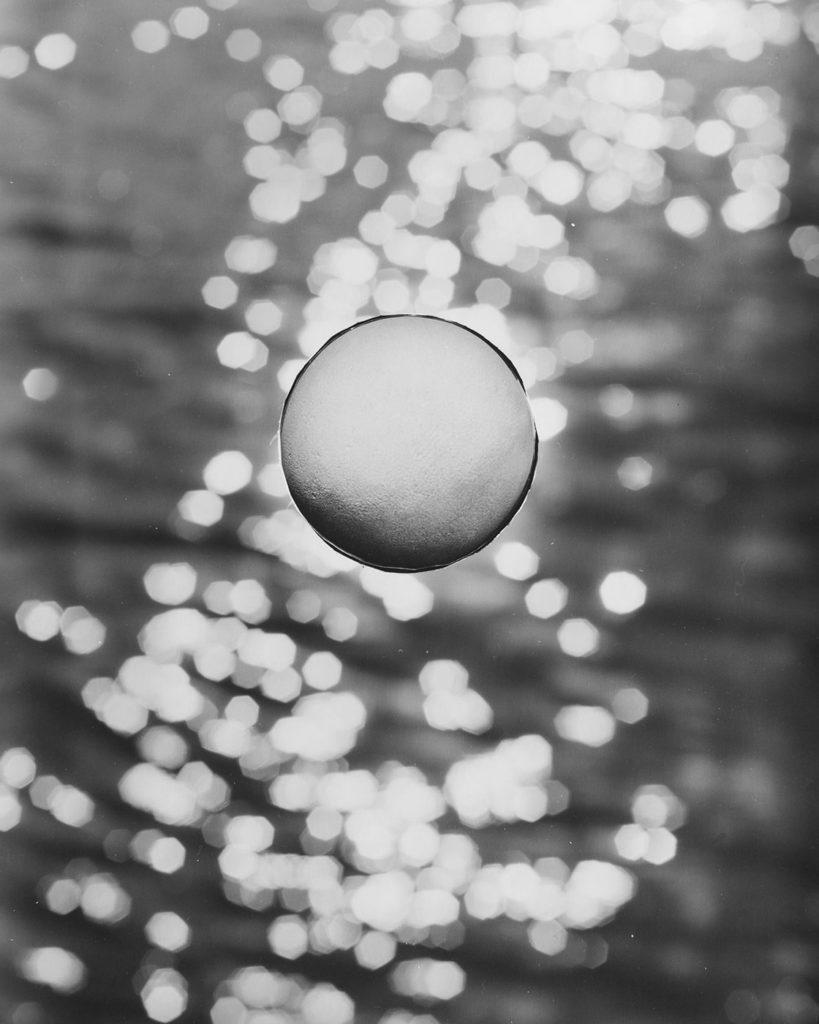
Gravity, 2022, silver gelatin print, 20x16"
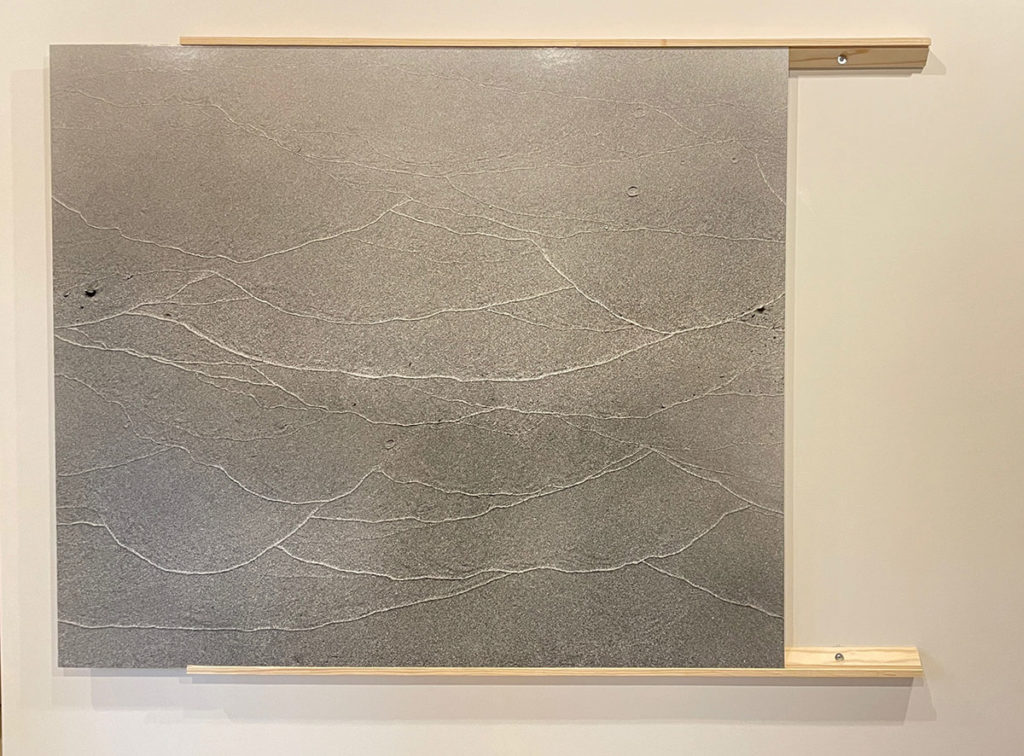
This is an experimental frame inspired by shoji screens. I think its not a very succesful work because the image doesn't really exist in dialogue with the action of the frame form, but it was a fun experiment.
Do you have your own studio ritual? What does that look like for you?
I would say that routine is my sanity, rather than a thing that keeps me sane. I have to live by external impositions because I can’t trust myself. It’s like waking up in the morning– if you don’t have to show up for work at a specific time you can easily convince yourself that more sleep is good. Thinking can really get you in trouble that way. I basically have to plan to improvise, it’s counterintuitive but it’s the best approach I’ve got.

Collecting stones on a walk with my parents. I love the way stones can take on meaning in response to the conditions under which they are encountered.
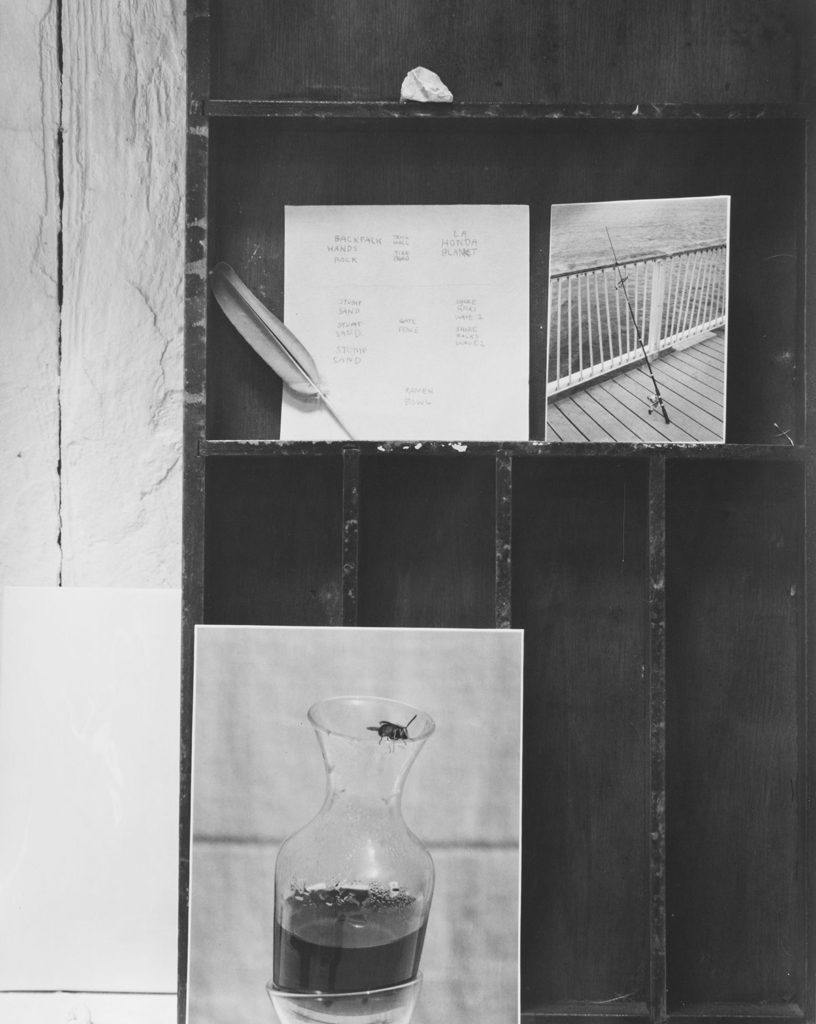
Who are your biggest influences?
I worked at an analog darkroom for four years and printed a ton of Latoya Ruby Frazier’s work. That artist contains multitudes. The work is centered on her identity and is astonishingly personal, and also the work remains open to a broad view that encapsulates the entire history of photography and representation. Latoya’s camera sees everything. My work looks nothing like hers, for a thousand and one reasons, but her photography gives me hope.
As far as influences on the way my work looks, I think of Katherine Hubbard, Letha Wilson, Lew Thomas, and Elad Lassry.
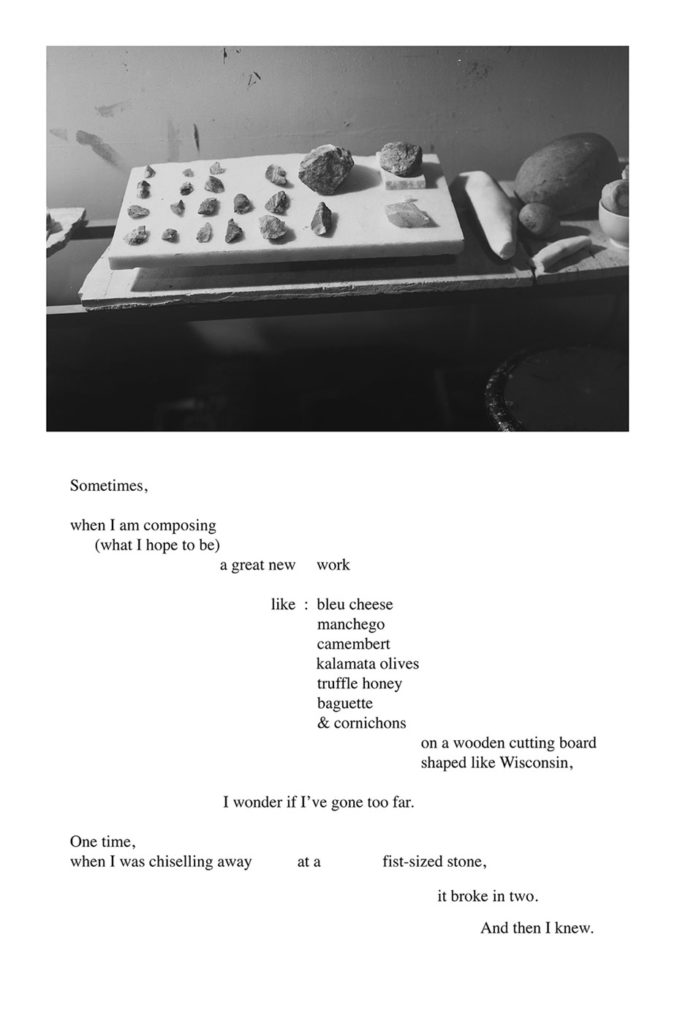
Too Far, 2021-2022, photograph and text - medium TBD, dimensions TBD
Are there books or films that are an important source of inspiration?
Right now Teju Cole has consumed my reading practice. He started as a writer, and then wrote about photography, and now he’s become this amazing photographer who handles the relationship between image and text in such skillful ways.
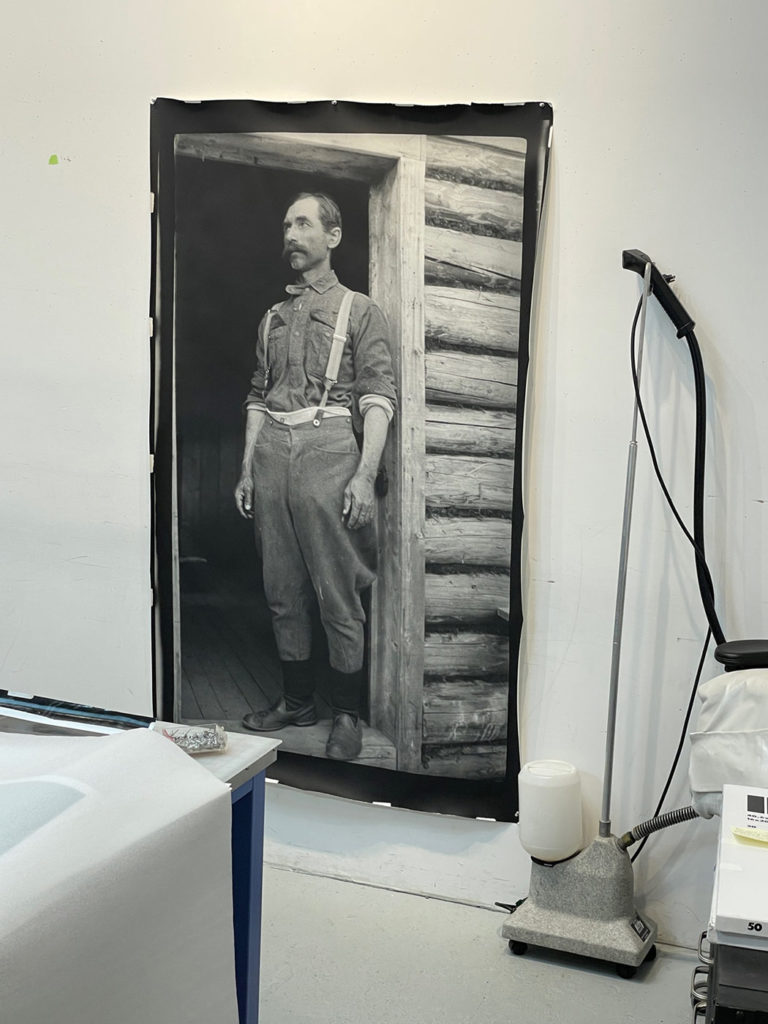
This is a lifesize silver gelatin print of an unidentified ancestor of mine, made from a negative that was exposed in the late 1800's. I care for my maternal ancestor's photographic archive, and love the idea that light particles bounced off this gentleman's body are somehow fixed inside the film, which I then shot light particles through in order to make this likeness emerge. It's different than the 1's and 0's that store information in a digital file, I can't say exactly how, but there is something of the spirit there.
The film “Memoria,” by Apichatpong Weerasethakul is also a good one. The film came out in 2021 but it’s still only screening in cinemas. I love this attention to the mode of delivery, to the unique experience of being in the cinema. There’s a great text on that subject by Nathaniel Dorsky, called “Devotional Cinema,” and I cannot recommend it highly enough.
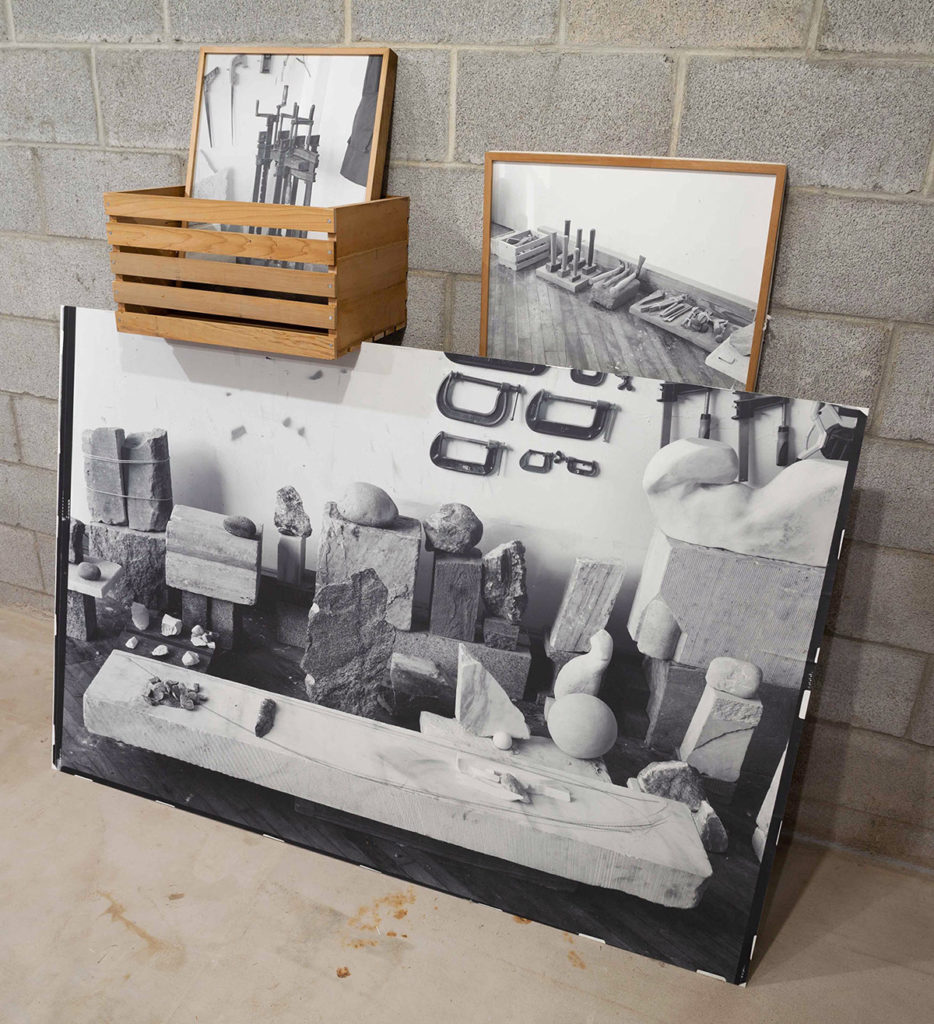
Keiron's Things, 2021-2022, silver gelatin prints mounted on dibond, cedar wood, string, nails, 62x62x24"
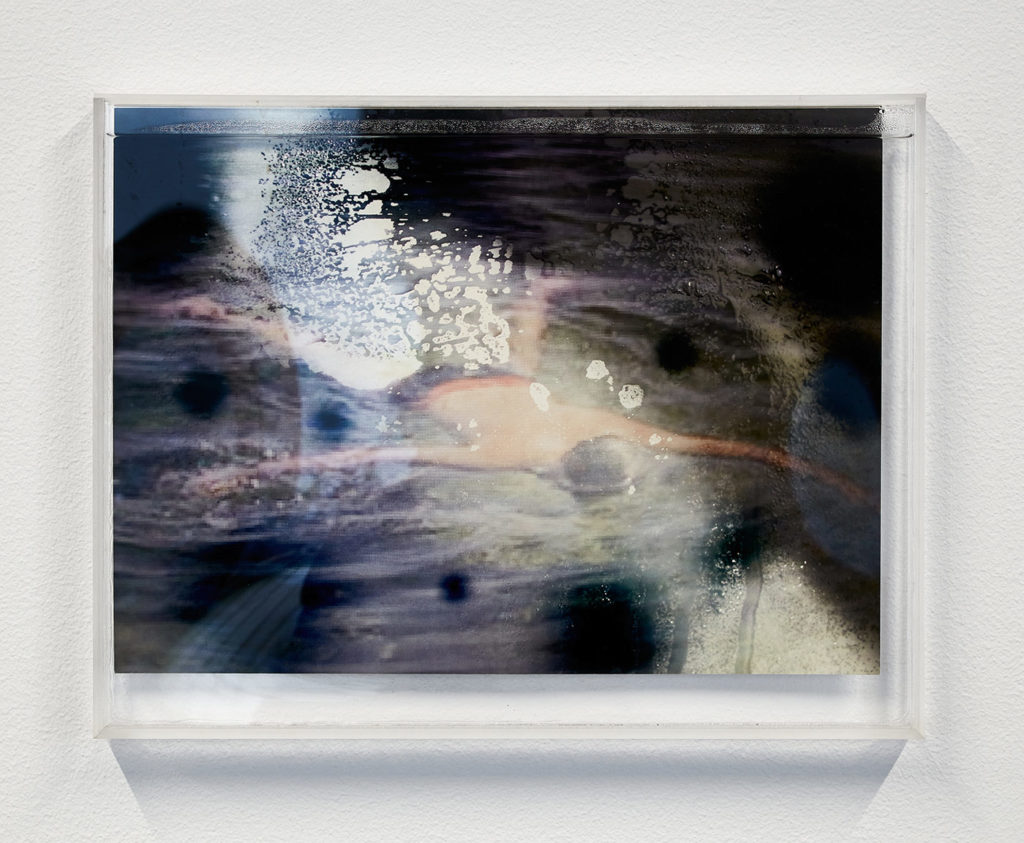
Swimmer (collaboration with Paulius Petraitis), 2021, pigment print, water, acrylic, 16x20x1.5" (photo credit: Madara Gritane / Riga Photography Biennial 2022)
What’s the best piece of advice you’ve been given?
Well I’m a huge fan of the artist Devendra Banhart, like, a fanboy. I discovered his music in a skate video in 2006 (Austin Stephen's part in "Suffer The Joy" by Toy Machine), and I’ve been picking up everything he’s put down since then. In 2019 I saw him at Printed Matter’s LA artbook fair and mustered the courage to go up to him – I told him how important his work was to me and gave him a book of mine. A month or so later, he found me on Instagram and sent me a message to say that he read my book, enjoyed it, and encouraged me to keep up the good work. That was the best advice in the world for me– to have this person that I basically idolize, whom I consider to have absolute access to the wellspring of creativity, and to have him say, essentially, “Yes, and keep going, this is it.”
What is the best advice you would give to other artists?
Keep up the good work!
Stay up to date with Sam Margevicius
Instagram @sammargevicius
sammargevicius.com